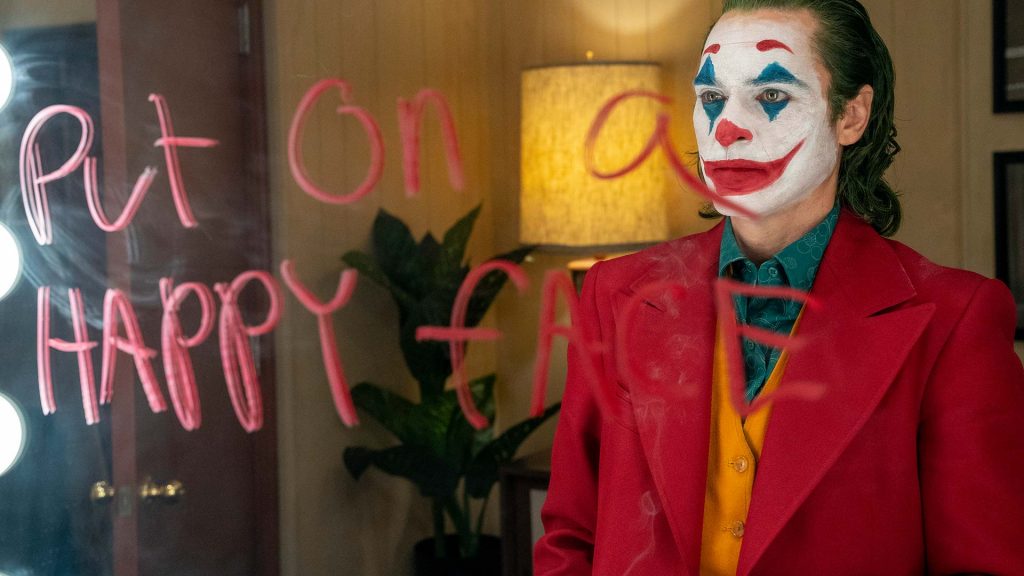
Never Retallack | Entertainment Editor
“Have you ever danced with the Devil in the pale moonlight?” This quote from “Batman” (1989) will ring true with the Joker, a character from the DC Franchise first introduced into the Batman comics in 1975 as a supervillain. His character is quite complex and has been interpreted many different ways throughout time. I will analyze each Joker that has been represented in film from as early as the 1960s.
“Batman” (1966): In this classic Batman TV series, Cesar Romero plays the devious Joker. The way this Joker was portrayed was quite comical; Romero was dressed in the typical makeup and green hair, but his evil plots often failed and he couldn’t even beat Alfred, Batman’s butler.
“Batman:The Killing Joke”(1988): This animated movie was based off of the comic of the same name, and starred Mark Hamill as the voice of the Joker.
This was a darker version of the character, shooting and paralyzing Batgirl before stripping her naked and taking pictures of her. Joker also says something that insuates he went as far to rape her afterwards as well. This appalling behavior was the first hint that the Joker wasn’t just a simple trickster. The writer, Alan Moore, says he regrets writing the comic, as the public outcry over this behavior towards Batgirl caused a large backlash for him.
“Batman” (1989): Jack Nicholson was known for his crazed character in “The Shining” (1980), and this equally crazed portrayal of the Joker followed the comics quite closely. The villain starts off as a normal man— that is until he falls into a vaut of chemicals — transforming him into a ruthless and cunning criminal. Nicholson’s Joker was unnerving but still followed a twisted humor, yet was not quite intimidating.
“The Dark Knight” (2008): As stated by the LA Times, this film is a turning point for the Joker, with Heath Ledger’s twisted performance of an unhinged villain who wreaks chaos and terror on the city of Gotham. Ledger’s Joker hinted at a sign of mental illness, never revealing his backstory in this film, but hinting at the terrors he’s faced throughout his life. The past Jokers were portrayed as silly and angry characters, resenting Batman and the wealthy, but Ledger’s often slipped into a crazed madness — not quite angry, but seemingly calm in his destruction.
“Suicide Squad” (2016): Jared Leto’s interpretation of the Joker led to a lot of backlash when first released; this modern day gangster version was bizarre in the world of Joker. Leto also received criticism due to his method acting, even going as far as to send used condoms and dead rats to his castmates. This showed the mentality of this Joker; a twisted man who enjoyed to cause discomfort, and that is what was delivered in “Suicided Squad.”
“The Joker” (2019): This film has received some concerns similar to the movie, “Extremely Wicked, Shockingly Evil and Vile” that showed the notorious killer Ted Bundy as a family man — a character to sympathize with. There was similar concern with “The Joker,” starring Joaquin Phoenix, as it led audience members to try and sympathize with the classic villain and even view Thomas Wayne (Batman’s father) as the antagonist.

Phoenix played the saddest version of the Joker: losing his access to medication, living with his ill mother, being mugged several times and being ridiculed for his dream of being a stand-up comedian. This doesn’t take away from the horrendous crimes he commits, although the audience is left wondering whether what they see is reality or all part of his delusion.
“The Joker” was not for the faint of heart, containing far more graphic scenes than ever used before, often leaving audience members gasping in horror and watching with mouths agape.
Overall, the classic villain, the Joker, has been a prominent member of the Batman franchise, and he has been portrayed in a variety of different ways since the 1960s. His origin story was based off the comics for several of the earlier Batman films, where a struggling crook frustrated with society falls into a vat of chemicals and becomes a disfigured and devious monster.
Ledger and Phoenix’s portrayal were outliers among all the films released; Ledger’s Joker was shrouded in mystery, never revealing his origin story, while Phoenix’s was void of a chemical influence. Both of these Jokers were more twisted than the others, showing unmistakable signs of mental illness, and rather than the comedic Romero or cruel Nicholson, they were shown as sad men driven to madness.
Contact the author at howlentertainment@wou.edu
Photo courtesy of dccomics.com

